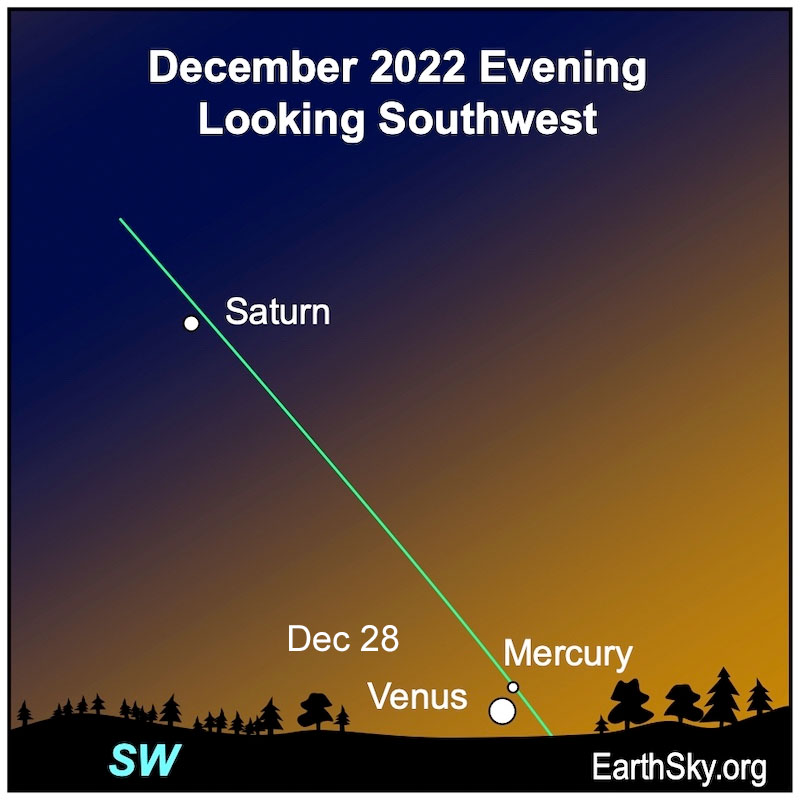
Venus and Mercury pair up in the evening sky
Venus and Mercury have been getting closer in our sky for a few weeks. And today, December 28, 2022, they’re at their closest. Their conjunction happens at 9 UTC on December 29, 2022. That’s when Mercury will sweep 1.4 degrees north of Venus on our sky’s dome. And that’s about the width of three full moons. But don’t worry about that exact time. No matter where you are on Earth, the time to look for them is after sunset. You’ll find them low in the west, near the sunset point.
The pair is in bright twilight. If you can’t see Mercury, aim binoculars at Venus to view Mercury and Venus in a single binocular field. Also, you can spot the ringed planet, Saturn, nearby in the evening twilight sky.
Mercury and Venus won’t be this close again until 2024. And then they’ll be too close to the sun to see. So don’t miss the pairing of Venus and Mercury on December 28 (or December 29)!
Tips on seeing the planetary conjunction
To witness this planetary pairing, find an unobstructed horizon in the direction of sunset.
As twilight changes into darkness, watch for Venus to pop into view about 30 minutes after sunset. Mercury will be nearby. Use binoculars to see Mercury, if you need them.
Mercury pales next to Venus. But Mercury still shines more brightly than most stars at +0.4 magnitude. Still, these worlds are in bright twilight, so Mercury will be tough to spot. About 40 minutes after sunset, you might be able to spot Mercury with the eye alone.
By the way, these objects are moving rapidly on the sky’s dome with respect to each other. Your perspective on them also shifts as seen from various parts of the globe. Try Stellarium for a precise view from your location.
Bottom line: Look for a close pairing of Venus and Mercury on the evenings of December 28 and 29, 2022. Start watching after sunset for Venus to pop into view, then start looking for Mercury nearby.
For more great observing events in the coming weeks, visit EarthSky’s night sky guide











